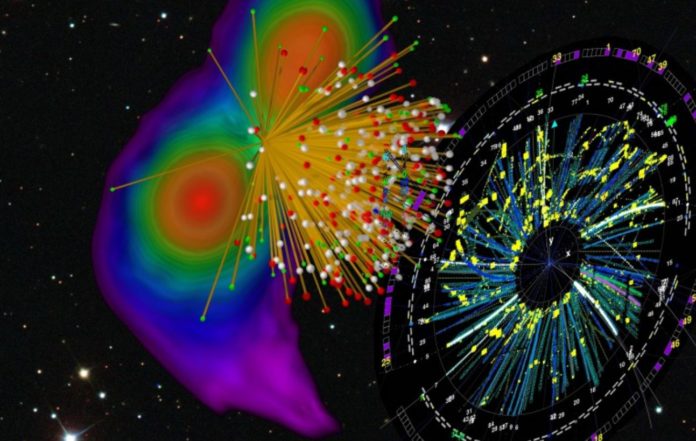For the first time, a multinational research team used advanced theoretical modeling to combine data from heavy-ion tests, gravitational-wave measurements, and other astronomical observations to more precisely define the features of nuclear materials found in the interiors of neutron stars.
The findings were reported in the scientific journal “Nature.”
Supernova explosions, which mark the end of the lives of huge stars, give birth to neutron stars everywhere around the Universe. When neutron stars are locked together in binary systems, they will eventually collide.
These high-energy astrophysical events produce the majority of heavy metals, such as silver and gold, due to their severe circumstances.
As a result, neutron stars and their collisions are one-of-a-kind laboratories for studying the characteristics of matter at densities considerably beyond those found inside atomic nuclei. Experiments using particle accelerators to manufacture and probe matter at high densities and under harsh conditions are complementary methods of producing and probing the matter.
New understanding of nuclear interactions
“Combining knowledge from nuclear theory, nuclear experiment, and astrophysical observations is essential to shedding light on the properties of neutron-rich matter over the entire density range probed in neutron stars,” says Sabrina Huth, one of the lead authors. “We find that constraints from collisions of gold ions with particle accelerators show a remarkable consistency with astrophysical observations even though they are obtained with completely different methods,” adds Peter T. H. Pang, another lead author.
The international research team, which included scientists from Germany, the Netherlands, the United States, and Sweden, was able to learn more about the fundamental interactions at work in the nuclear matter thanks to recent advances in multi-messenger astronomy.
In a cross-disciplinary effort, the researchers put together information from heavy-ion collisions with astronomical observations of electromagnetic signals, measurements of gravitational waves, high-performance astrophysics calculations, and theoretical nuclear physics calculations.
Their comprehensive research, which brings together all of these previously separate fields for the first time, hints that neutron stars may have higher pressures at intermediate densities.
Heavy-ion collision data
The authors used data from gold-ion collision experiments at the GSI Helmholtzzentrum für Schwerionenforschung in Darmstadt, as well as Brookhaven National Laboratory and Lawrence Berkeley National Laboratory in the United States, in their multi-step procedure that analyzes constraints from nuclear theory and astrophysical observations, such as neutron star mass measurements from radio observations and information from the Neutron Star Interior Composit.
Sabrina Huth and Achim Schwenk of Technical University Darmstadt, as well as Ingo Tews of Los Alamos National Laboratory, were helpful in translating the data from heavy-ion collisions to neutron star matter, which is required to account for astrophysics restrictions.
By including data from heavy-ion collisions in the analyses, more limits have been put on the region of density where nuclear theory and astrophysical observations are less accurate.
This clarifies dense substance. Future advances in heavy-ion collisions could play a significant role in bridging nuclear theory and astrophysics by offering complementing knowledge.
Experiments that investigate higher densities while lowering experimental uncertainties, in particular, offer a lot of promise for providing new constraints on neutron star features. In the next years, new knowledge from either side can simply be incorporated into the framework to increase our understanding of dense matter.
You were reading: Neutron Stars Matter As They Produce Gold: New Insights
